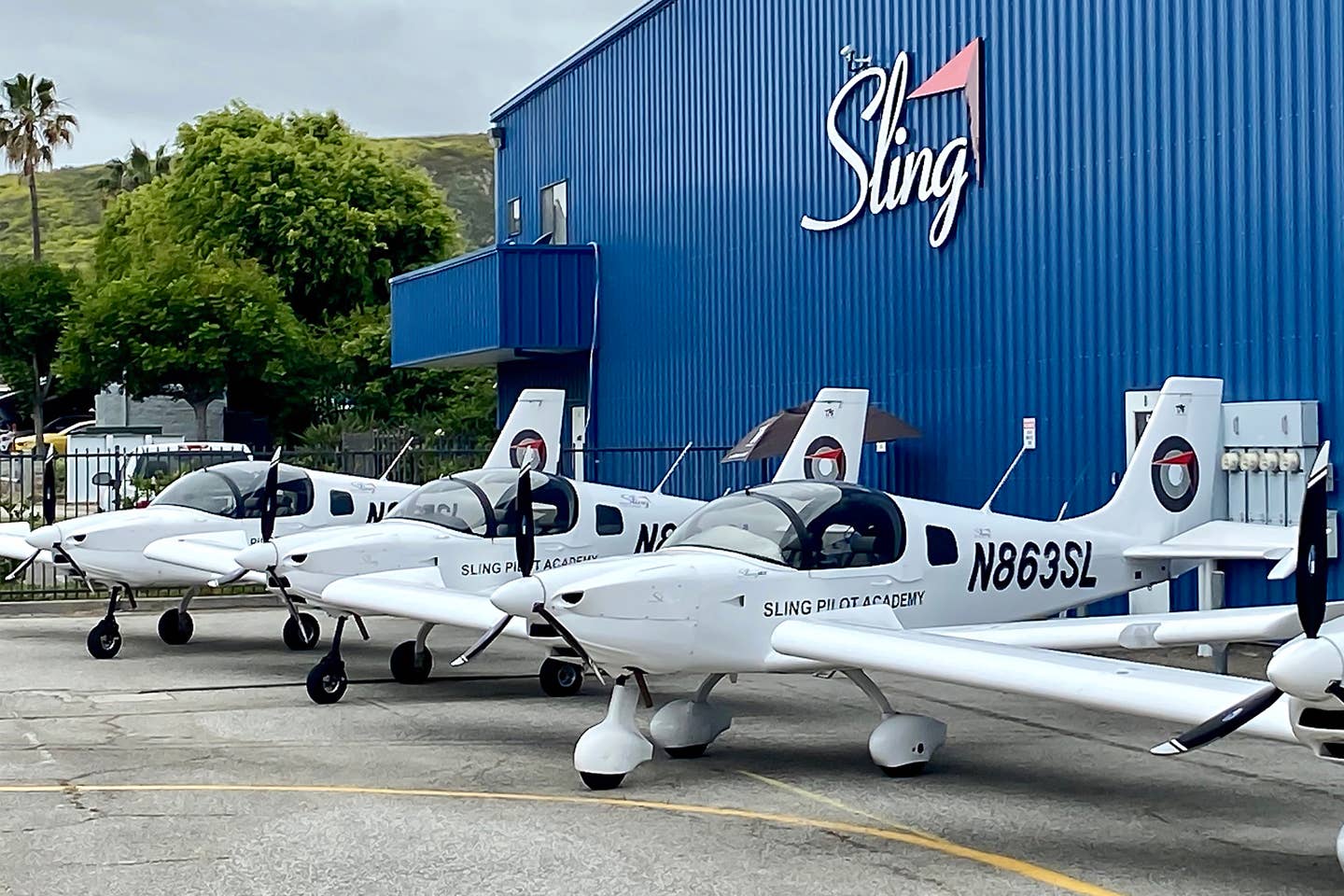
Sling Pilot Academy has found success using Sling Light-Sport NGTs for initial airline pilot training. Credit: Sling Pilot Academy
Pre-pandemic, the commercial pilot shortage was top of mind for just about anyone in the aviation community. Then, COVID-19 ravaged the globe, airline travel took a massive hit, and in survival mode airlines began shedding pilots through furloughs and early retirement packages.
Fast-forward to today, and airline travel is back in a big way, even as new variants of the coronavirus emerge. What’s also back is that troublesome pilot shortage, with every major and regional airline, and many Part 135 operators scrambling to find qualified, current pilots to fill their front seats.
For the person wanting a career as a professional pilot, this is the Gold Rush, with hiring bonuses, higher starting wages, and faster transitions from a regional airline to a major being commonplace.
“Sling pilots end up being better stick-and-rudder pilots in most cases compared to [learning in] legacy airplanes."
Matt Liknaitzky, Co-CEO, SPA
At Sling Pilot Academy (SPA) in Torrance, California, the flight school is doing brisk business these days, minting as many qualified candidates as they can to fill those seats. The school quotes a recent Boeing study that says the industry will need 637,000 new pilots through 2036. That’s 31,850 per year and 87 per day.
SPA has recognized something most flight schools have not, that teaching professional pilots in a modern, well-equipped, and attractive light sport airplane like the Sling NGT (“Next Generation Trainer” version of the Sling LSA) is the “secret sauce” in retaining the vast majority of anyone who comes through the door and takes an introductory flight in the numerous NGTs on its flight line.
“The great visibility that the Sling NGT offers, coupled with the sporty and direct handling, all-glass Garmin avionics, and great ergonomics, means that everyone who flies it, enjoys it,” said Matt Liknaitzky, SPA’s co-CEO and a CFI with commercial pilot and multiengine ratings, and a sport pilot designated pilot examiner rating—and 3,000 hours total time.
“Sadly, many legacy airplanes do disappoint modern first-time flyers in terms of comfort, visibility, modernness, and ramp appeal,” said Liknaitzky. “About 90 percent of all people who take an introductory flight with SPA sign up as students. That has every bit to do with the aircraft as it has to do with anything else we do here.”
How Is This Effective?
If you are asking yourself how a 1,320-pound, light sport airplane can prepare someone to fly a Boeing 777 across oceans, let’s consider basic aerodynamics. Regardless of the airframe’s size, every airplane that has ever been invented adheres to the same four laws of flight physics: thrust, drag, lift, and gravity. A new pilot must first learn these laws by developing solid stick-and-rudder skills that translate well to flying any airplane.
This is where Sling’s NGT shines.
“The Sling NGT is one of the bigger LSAs out there and was designed for a max gross weight of 1,540 pounds—220 pounds more than the LSA max of 1,320 pounds,” Liknaitzky said. “It has outstanding handling characteristics, good stability, and great, predictable responsiveness.
“Sling pilots end up being better stick-and-rudder pilots in most cases compared to [learning in] legacy airplanes. Moving into bigger airplanes is an easy transition in most cases because of the good primary stick-and-rudder skills instilled in our training.”
Liknaitzky says having a fleet of 10 Sling NGTs on the flight line—with four more to be added in the next four months—makes good economic sense for both flight school and student.
“Our choice of the Sling NGT is a direct contributor to our ability to offer the same hours as some of our accelerated flight training competitors at a $20,000 or more lower cost,” Liknaitzky said. “Our LSAs burn an average of 3.5 gph of unleaded car gas, and we have two fuel trucks that we fill up every day to supply our fleet. We do over 1,400 hrs of flight instruction per month, and it is not unusual for one of our Slings to fly over 180 hours in a month.”
The Tech Checks Out
Every NGT in SPA’s fleet is all equipped with Garmin G3X Touch panels coupled with GTN650 IFR navigators (GPS/VOR/ILS), autopilots, and backup G5s, so they qualify as TAAs (technologically advanced airplanes). They can also be used to satisfy the commercial pilot certificate’s TAA experience requirements.
Liknaitzky said that using modern avionics teaches SPA’s students to become proficient with advanced systems and prepares them well for the systems-intensive experience they will experience as an airline pilot.
The Next Step
SPA has seen “accelerating hiring” of their CFI graduates by the airlines and 135 operators, with their top eight CFIs being hired by regional airlines in the fourth quarter of 2021, with start dates as early as January 2022.
SPA’s use of light sport airplanes helping to prove the legitimacy of the category. A modern LSA like the Sling NGT attracts younger, tech-savvy students to the front door and keeps them there, where they can quickly build hours, learn to operate advanced avionics, and have a blast doing it.
Flight training needs to be fun. And nothing delivers that rush of fun like a sharp, nimble airplane with plenty of razzle-dazzle on the panel, one that looks great as you walk across the ramp to begin the next lesson. It’s these attributes that will keep students motivated to stay with it and not wash out on their journey to that coveted airline interview.

Subscribe to Our Newsletter
Get the latest FLYING stories delivered directly to your inbox






